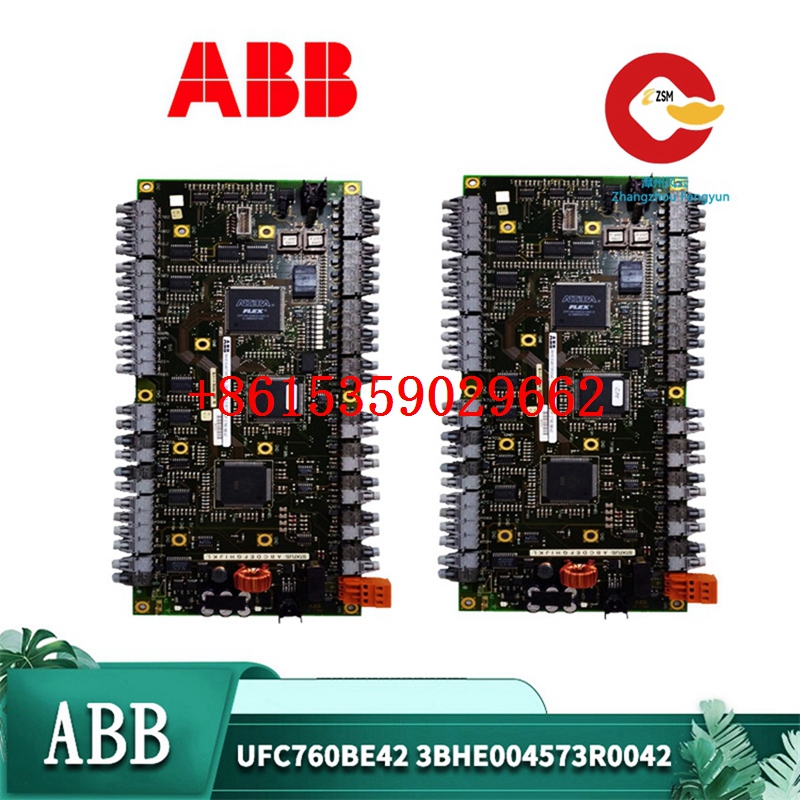Technical Parameters Introduction of ABB VBR01 – FPNA Symphony Plus 2VAA008433R1

1. General Overview
The ABB VBR01 – FPNA Symphony Plus 2VAA008433R1 is a crucial component within ABB’s Symphony Plus distributed control system (DCS). It serves as a functional module, playing a vital role in the overall automation and control of industrial processes, particularly in power generation, oil and gas, and other heavy – industry sectors.
2. Hardware Parameters
- Dimensions and Weight
- Dimensions: The module has specific physical dimensions, typically measured in millimeters. For example, it may be 200mm (length) x 150mm (width) x 50mm (height). These dimensions are important for proper installation within the DCS cabinet, ensuring that there is sufficient space for mounting and ventilation.
- Weight: The weight of the module is usually around 1 – 2 kg. This information is relevant for transportation, handling during installation, and the structural design of the supporting racks within the cabinet.
- Power Supply Requirements
- Input Voltage: It operates on a standard DC voltage input, often in the range of 24V ± 10%. This ensures a stable power supply and compatibility with the power distribution system within the DCS.
- Power Consumption: The power consumption of the module varies depending on its operational state. In idle mode, it may consume around 5 – 10W, while under full – load operation, the power consumption could increase to 15 – 20W. This is crucial for power budgeting and energy management in the DCS.
3. Communication Parameters
- Supported Communication Protocols
- Proprietary ABB Protocol: The VBR01 – FPNA module is designed to work seamlessly with ABB’s proprietary Symphony Plus communication protocol. This protocol ensures high – speed, reliable, and secure data exchange between different components within the DCS, such as controllers, input/output (I/O) modules, and human – machine interfaces (HMIs).
- Modbus: It may also support the Modbus communication protocol, a widely used serial communication standard in industrial automation. This allows for integration with third – party devices that are Modbus – compatible, enhancing the flexibility and interoperability of the DCS.
- Communication Interfaces
- Ethernet Interface: The module is equipped with an Ethernet RJ – 45 interface, enabling high – speed communication over Ethernet networks. This interface allows for fast data transfer between the module and other devices in the DCS, as well as remote monitoring and control capabilities.
- Serial Interface: In addition to the Ethernet interface, it may have a serial interface (such as RS – 232 or RS – 485) for local communication with other devices or for configuration purposes.
4. Functional Parameters
- Input/Output Capabilities
- Analog Inputs: The module may have a certain number of analog input channels. For example, it could support 4 – 8 analog input channels with a resolution of 16 bits. These analog inputs are used to measure continuous variables such as temperature, pressure, and flow rate in the industrial process.
- Digital Inputs/Outputs: It also provides digital input and output channels. The number of digital inputs and outputs may vary, but typically, it could have 8 – 16 digital input channels and 8 – 16 digital output channels. Digital inputs are used to detect binary states (such as on/off, high/low), while digital outputs are used to control binary devices (such as valves, motors).
- Signal Processing and Conditioning
- The module has built – in signal processing and conditioning capabilities. It can filter, amplify, and linearize analog signals to ensure accurate and reliable measurement. For digital signals, it can perform debouncing and logic operations to improve the stability and reliability of the control system.
5. Environmental Parameters
- Operating Temperature Range
- The module is designed to operate within a specified temperature range. It can typically withstand an operating temperature range of – 20°C to + 60°C. This ensures reliable performance in a variety of industrial environments, from cold storage facilities to hot manufacturing plants.
- Humidity Resistance
- It has a certain level of resistance to humidity. The module can operate safely in environments with relative humidity levels up to 95% non – condensing. This humidity resistance is important to prevent moisture – related damage such as corrosion and short – circuits.
6. Protection Features
- Over – voltage and Over – current Protection
- The VBR01 – FPNA module is equipped with over – voltage and over – current protection circuits. In the event of a voltage surge or excessive current flow, these protection circuits can quickly detect and isolate the fault, preventing damage to the module and other connected devices within the DCS.
- Electromagnetic Compatibility (EMC) Protection
- It is designed to meet strict EMC standards. This means that the module can operate without causing electromagnetic interference to other devices in the industrial environment, and it can also withstand external electromagnetic interference, ensuring reliable and stable operation.
In summary, the ABB VBR01 – FPNA Symphony Plus 2VAA008433R1 is a well – engineered functional module with a comprehensive set of technical parameters. These parameters ensure its compatibility, reliability, and performance within the ABB Symphony Plus DCS, enabling efficient and accurate control of industrial processes.


